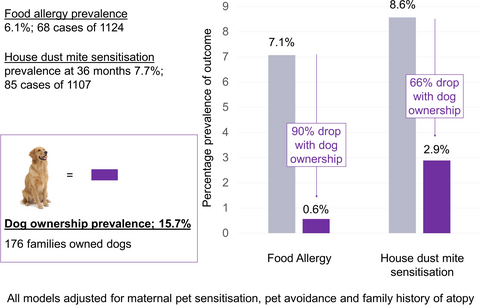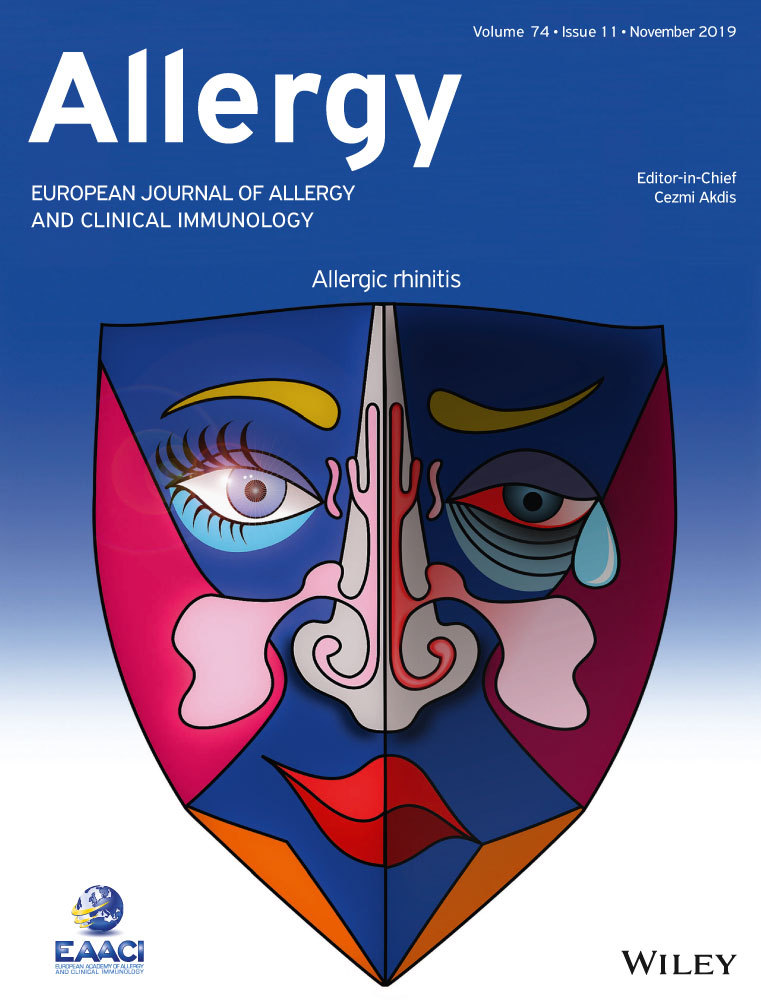Dog ownership at three months of age is associated with protection against food allergy
Funding information
The main components of the EAT study were jointly funded by the UK Food Standards Agency (FSA, grant code T07051) and the Medical Research Council (MRC, grant MC_G1001205). The skin-related aspects of the study were supported by a Clinician Scientist Award from the UK National Institute for Health Research (NIHR) held by CF (NIHRCS/01/2008/009). The McLean laboratory is funded by Wellcome Trust Programme (092530/Z/10/Z; to WHIM) and Bioresources grants (090066/B/09/Z; to WHIM). The Centre for Dermatology and Genetic Medicine, University of Dundee, is supported by a Wellcome Trust Strategic Award (098439/Z/12/Z; to WHIM). The views expressed in this publication are those of the authors and not necessarily those of the Food Standards Agency, the Medical Research Council, the NHS, the UK National Institute for Health Research, the UK Department of Health or the Wellcome Trust.
Abstract
Background
The prevention of food allergy is a key priority for reducing the burden of allergic disease. Environmental exposures modulate the risk of developing food allergy and some of this may be mediated by the infants’ developing microbiome. However, the role of potentially protective environmental exposures, such as pet ownership, is largely uninvestigated with respect to food allergy.
Methods
We performed a secondary cohort analysis in the Enquiring About Tolerance (EAT) study, which enrolled 1303 three-month infants onto a randomized trial to prevent food allergy. A survey elicited domestic animal ownership and participants were examined for atopic dermatitis (AD) at enrolment. Sensitization to foods and aeroallergens were elicited by skin and serum testing at 3, 12 and 36 months. Food allergy status was determined by double-blind placebo-controlled food challenges between 1 and 3 years.
Results
Food allergy was diagnosed amongst 6.1% (68/1124) of participants with complete data. No significant relationships were demonstrated between food allergy and caesarean delivery, infections or antibiotic exposure in early life. After adjusting for familial atopic disease, maternal dog/cat sensitization and participant AD, living with dogs was associated with a 90% reduction in the odds of infants developing food allergy (adjusted odds ratio (aOR) 0.10 (confidence interval (CI) 0.01-0.71), P = 0.02). None of the 49 infants living with at least two dogs developed food allergy, suggesting a dose-response relationship (each dog owned aOR 0.12 (CI 0.02-0.81), P = 0.03). No relationship was demonstrated between owning dogs or cats and the development of AD.
Conclusion
Dog ownership in infancy may prevent food allergy.
Graphical Abstract
Dog ownership was associated with a significant reduction in the development of food allergy amongst a prospective birth cohort. Physiological plausibility was enhanced by finding dose-response effects and inverse associations with food and house dust mite sensitization.The inverse relationship with food sensitization was appearing by three months, suggesting that immune modulation may commence from birth or prenatally.





